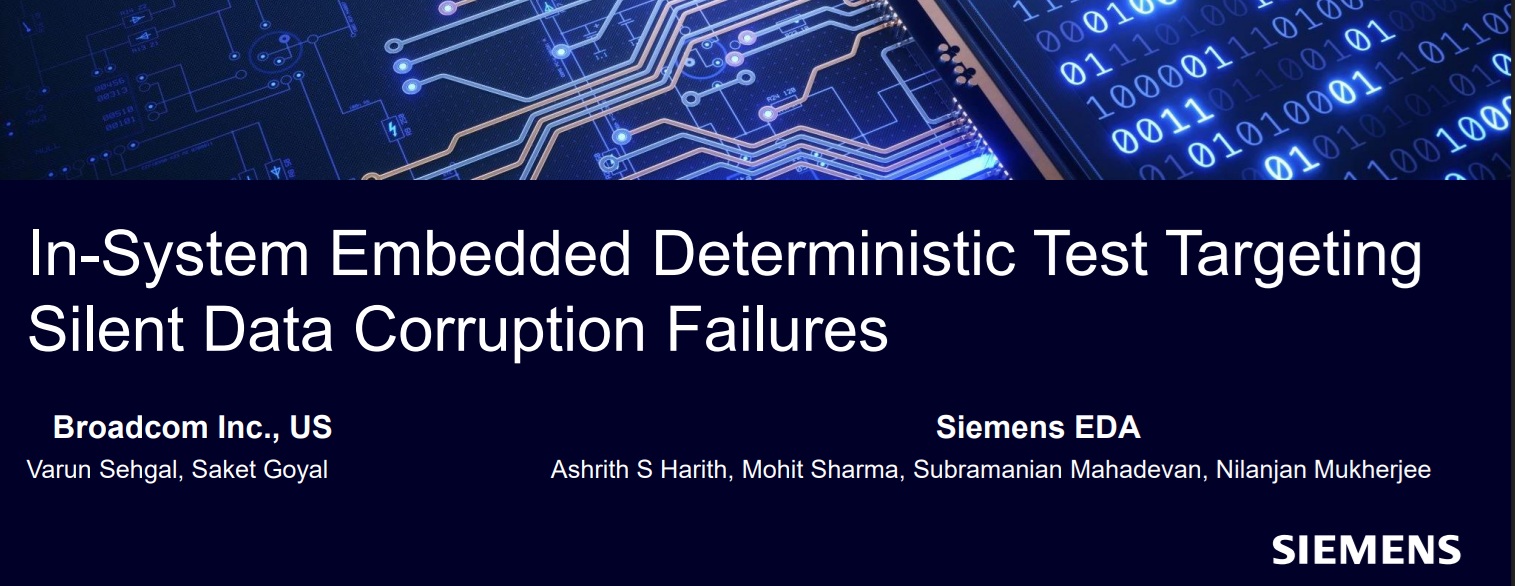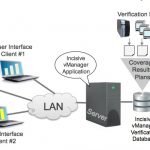There was a time not that long ago, before smartphones arrived on the scene, where Mentor Embedded Nucleus RTOS was dominant in non-Nokia feature phones – Mentor is part of the “Billion Unit Mobile Club”. Since then, Mentor has been searching to recreate that type of success, and like so many other software firms, they are now aiming… Read More
 Revolutionizing Hardware Design Debugging with Time Travel TechnologyIn the semiconductor industry High-Level Synthesis (HLS) and…Read More
Revolutionizing Hardware Design Debugging with Time Travel TechnologyIn the semiconductor industry High-Level Synthesis (HLS) and…Read More Addressing Silent Data Corruption (SDC) with In-System Embedded Deterministic TestingSilent Data Corruption (SDC) represents a critical challenge…Read More
Addressing Silent Data Corruption (SDC) with In-System Embedded Deterministic TestingSilent Data Corruption (SDC) represents a critical challenge…Read More TSMC's 6th ESG AWARD Receives over 5,800 Proposals, Igniting Sustainability PassionTaiwan Semiconductor Manufacturing Company has once again demonstrated…Read More
TSMC's 6th ESG AWARD Receives over 5,800 Proposals, Igniting Sustainability PassionTaiwan Semiconductor Manufacturing Company has once again demonstrated…Read More Tiling Support in SiFive's AI/ML Software Stack for RISC-V Vector-Matrix ExtensionAt the 2025 RISC-V Summit North America, Min…Read More
Tiling Support in SiFive's AI/ML Software Stack for RISC-V Vector-Matrix ExtensionAt the 2025 RISC-V Summit North America, Min…Read More TSMC based 3D Chips: Socionext Achieves Two Successful Tape-Outs in Just Seven Months!Socionext’s recent run of rapid 3D-IC tape-outs is…Read More
TSMC based 3D Chips: Socionext Achieves Two Successful Tape-Outs in Just Seven Months!Socionext’s recent run of rapid 3D-IC tape-outs is…Read MoreTI’s Way of Strategies – Formation & Execution
For a company to stand still and continually prosper even after facing several downturns in its career of 80+ years, and still move swiftly with strong commitment and confidence, its strategy has to be right and rock solid possessing sustainable competitive advantage, and of course it has to be an early mover in everything it does… Read More
A Brief History of Chip Design at Apple Computer
Steve Wozniak in 1976 designed the Apple 1 while working at HP during the daytime, and he used standard parts to keep costs low, like:
- 6502 CPU from MOS Technology
- 8K of DRAM
- TTL logic for driving video and random logic
- PROM to hold the BASIC language and primitive OS
Getting an MPW Quote on My iPhone
As I blogged about recently, eSilicon have completely automated the quote process for their MPW shuttle service. You can use an online interface that runs in the browser but there is also an app that you can download from the App Store.
So I decided I had a few million dollars to burn and I’d get myself my very own TSMC 20nm parts.… Read More
Skate to where the mobile puck is headed, Intel
Mobile World Congress 2014 has already showcased two very different mobile SoC machines in high gear. After watching one big US moment and Canada otherwise dominate everything involving ice and a stick at the Sochi Olympics, I’m reaching into the Wayne Gretzky pile of quotes for a metaphor to examine Intel’s move – and why they are… Read More
SoC Functional Verification Planning and Management Goes Big
Big SoC designs typically break existing EDA tools and old methodologies, which then give rise to new EDA tools and methodologies out of necessity. Such is the case with the daunting task of verification planning and management where terabytes of data have simply swamped older EDA tools, making them unpleasant and ineffective… Read More
More things on the DSP frontier at MWC14
With a well-chronicled share inside cellular baseband interfaces for mobile devices, one might think that is the entire CEVA story, especially going into Mobile World Congress 2014 this week. MWC is still a phone show, but is becoming more and more about the Internet of Things and wearables, and CEVA and its ecosystem are showing… Read More
The Future of Money is Digital – Part 2
BitCoin Algorithm
Invented by a mystery person/group with the alias “Satoshi Nakamoto”. [You can read a consolidation of the paper here]. The essential elements are:
· Peer to Peer Network with self-validation
· Exponentially increasing compute cost
· Finite supply with exponential conversion
· Hidden in plain… Read More
Glasses Refocus Mobile Power Design
Contextual awareness likely will emerge as one of the most exciting new user experiences enabled by wearable products. It happens when a mobile device, carried or worn, senses the user’s surroundings and presents information, offers advice, or controls itself and/or other devices according to that specific environment. This… Read More
A Brief History of Kandou Bus
Kandou Bus uses a novel form of spatial coding to transmit data between wired chips. The main idea is to introduce correlations between the signals sent on the interface, and choose the correlations judiciously to lower the power consumption, increase the speed, and lower the footprint. It is a generalization of differential … Read More




Quantum Advantage is About the Algorithm, not the Computer